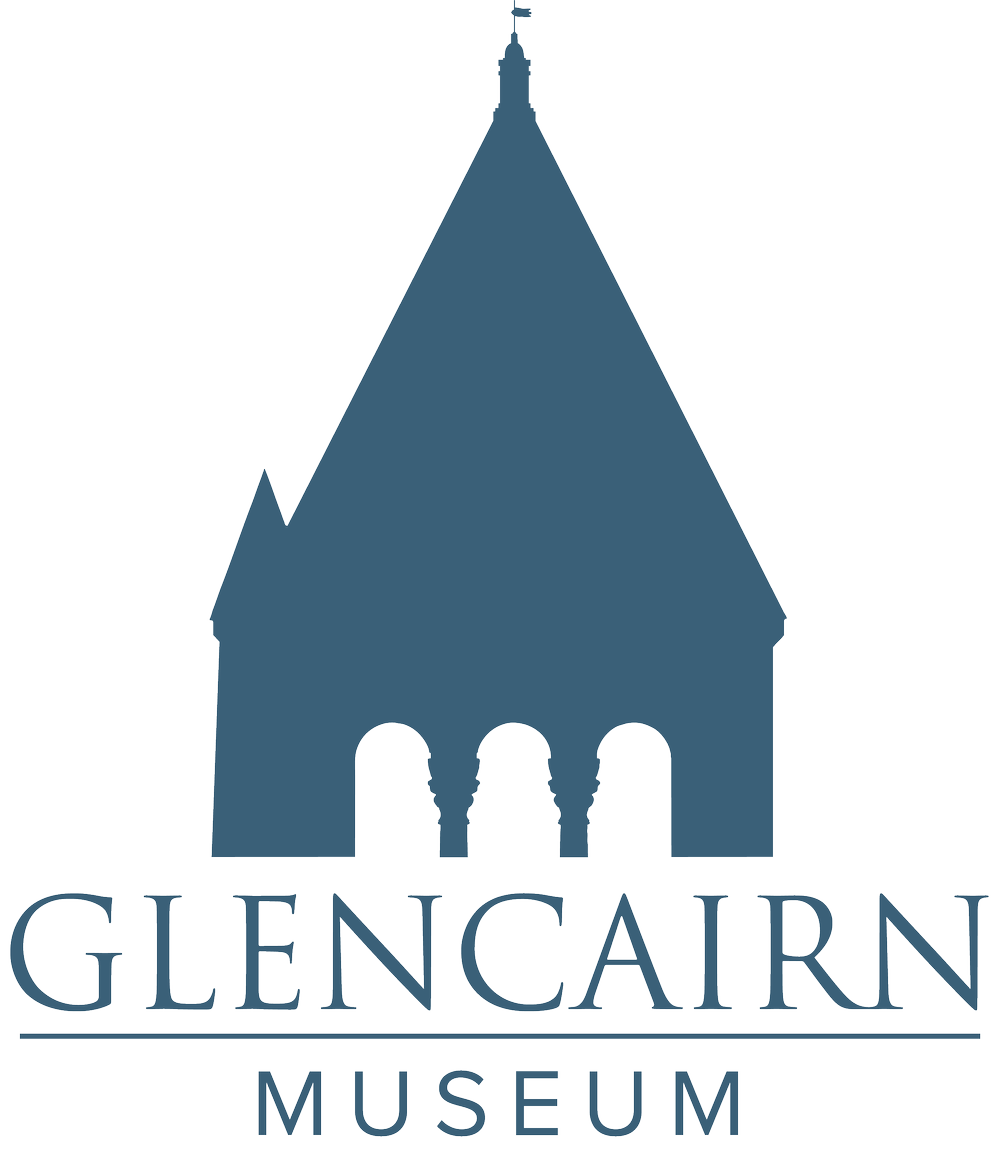Glencairn Museum News | Number 11, 2012
Mildred and Raymond Pitcairn pose for their 1954 Christmas card beside the "Seven Days of Creation" fireplace in Glencairn's Upper Hall. A large oil painting of the shepherds visiting the Christ Child hangs above the fireplace.
For many Christians around the world the Nativity scene is a meaningful expression of religious faith, providing a compelling visual focus during the Christmas season. Glencairn Museum’s fourth annual exhibition of dozens of Nativity scenes, this year originating from more than 20 countries, will be accompanied by a number of Christmas-themed events.
Figure 1: Coptic (Egyptian Christian) Nativity.
In addition to Follow the Star: World Nativities, an exhibition open six days per week (admission free, donations welcome), this year Glencairn is offering a special holiday tour, “Christmas in the Castle.” Other Nativity Festival events include Glad Tidings: A Celebration of Christmas, a Ten Thousand Villages Festival Sale (including handcrafted Nativities from around the world), the 75th annual Glencairn Christmas Sing Concert, and an Epiphany Program on January 6th.
Figure 2: Mildred Pitcairn at Glencairn with her grandchildren in 1967.
A YouTube video about the World Nativities exhibition, created by local photographer Brent Schnarr, highlights just a few of the Nativity scenes on view this year in Glencairn’s Great Hall and other locations on the first floor. During the 1920s and 30s Raymond Pitcairn assembled a collection of medieval stained glass and sculpture that was to become one of the best in the country. Among these objects were many outstanding examples of Nativity art. The Pitcairns also commissioned a large three-scene Nativity for their home at Cairnwood, made by Winfred Hyatt and other artists from the Bryn Athyn Studios (Figure 2; one of the three scenes). The scenes have been displayed at Glencairn annually ever since the building was completed in 1939. The Pitcairns also had Nativity scenes made for Bryn Athyn Cathedral, and in the 1950s they commissioned a Nativity for the Eisenhower White House, which was exhibited annually in the East Room beside the Christmas tree. The Eisenhower Nativity, made by the Bryn Athyn Studios with figures by Bucks County woodcarver Hanna Binder, is now in the collection of the Eisenhower National Historic site in Gettysburg, PA.
Figure 3: Neapolitan Presepio by Giuseppe Ferrigno, 2007.
In 2009 Glencairn Museum began an ongoing initiative to collect three-dimensional Nativities for our annual exhibition, Follow the Star: World Nativities. While art historians usually designate such three-dimensional Nativities as “craft,” sometimes they have been recognized as “fine art,” such as the 18th-century Neapolitan presepio exhibited annually beneath the Christmas tree at the Metropolitan Museum of Art in New York City. Christians around the world have adapted the Nativity scene to represent their own national, regional, and local cultures. Depending on the geographical location, the customary ox and donkey at the manger may be replaced by a water buffalo, zebra, or llama. Nativities are often crafted from whatever materials are locally available, such as clay, wool, grass, cornhusks, and even coconuts. This year one of the sets in the Glencairn exhibition, made in Kenya, was crafted entirely from banana leaf fiber (Figure 4). Special settings for dozens of the Nativities have been created by Kathleen Glenn Pitcairn, an artisan from Bryn Athyn whose father worked as an artist at Glencairn when it was being built in the 1930s.
Figure 4: Nativity from Kenya made from banana leaf fibers.
Many of the Nativities in this year’s exhibition have been gifted to Glencairn by Alan and Mary Liz Pomeroy of West Chester, Pennsylvania. The Pomeroys and several other donors to Glencairn’s collection are members of The Friends of the Crèche, a nonsectarian and nonprofit organization dedicated to supporting those who exhibit, study, collect, or simply enjoy Nativity scenes. According to Ed Gyllenhaal, Glencairn’s curator, “Although Nativities can be enjoyed on purely spiritual and aesthetic grounds, we think that to fully appreciate a Nativity it’s important to understand the context in which it was created. We were therefore thrilled to discover The Friends of the Crèche, our country’s only national Nativities organization.” Glencairn has published a special online Web resource, Do You See What I See: Imagery in Nativity Scenes, to help visitors understand the origin and meaning of the images found in Nativity art.
The Glad Tidings event this Sunday (December 2, 1-5 pm) includes live Christmas music, a family activity, and a Christmas Quest of Nativity art in Glencairn. Holiday refreshments will be offered at the “Castle Café,” and visitors can get some of their holiday shopping done at the Museum’s Ten Thousand Villages Festival Sale and at Glencairn's gift shop. The nonprofit Ten Thousand Villages, which helps craftspeople receive fair price for their products, offers handmade items from 38 countries, such as hand-loomed textiles, pottery, jewelry, baskets, musical instruments, cards, toys and Nativities.
Figure 5: Steve Chardos and his sister Louise Chardos, standing by Glencairn's Christmas tree, hold two of the 1950s Lionel toy trains they donated to the Museum.
Decorating Glencairn’s Great Hall is a Christmas tree with vintage and antique handblown glass ornaments, and beneath the tree is a pre-World War II Christmas village and Nativity scene. New under the tree this year is an operating 1950s Lionel toy train donated by Louise Chardos of Hoboken, N.J., and her brothers Jim, Hank, and Steve (Figure 5). Her brothers collected the trains and accessories as boys, setting them up annually beneath the family’s Christmas tree. Like Glencairn’s tree, the Christmas tree in the Chardos home when the children were growing up in the 1950s always had a Nativity scene beneath it. The Lionel trains have been expertly restored and are maintained by Joe’s Train Station in Feasterville, PA.
Figure 6: Visitors to "Glad Tidings: A Celebration of Christmas," 2011.
(CEG)
A complete archive of past issues of Glencairn Museum News is available online here.







